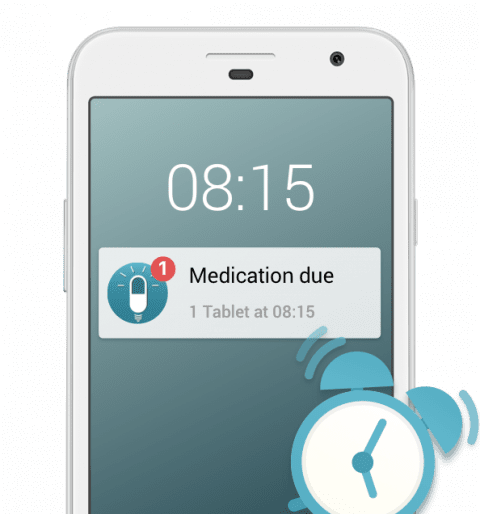1 in 7 people worldwide has been affected by migraines. Odds are, you either know someone who suffers from migraines or you have them yourself. Caused by anything from preexisting conditions to head trauma, migraines occur at an alarming rate. For this reason, knowing about treatment options, such as the migraine cocktail, can be beneficial to anyone.
Migraines vs Headaches:
Everyone gets headaches sometimes, but migraines are more than a common headache. Understanding the difference is important, but not always easy. While it is true that a migraine is one type of headache disorder, migraines are far more severe than headaches. Typically, but not always, migraines will occur in an isolated location and can last anywhere from hours to days. Severe migraines may also produce symptoms so intense that they can become debilitating. Symptoms such as constipation, sensitivity to light, stiffness, and fatigue accompanying a severe headache may also indicate that it is a migraine. In many cases, the first indicator can be as simple as “something about this headache feels different than usual.”
People who find themselves experiencing frequent severe headaches should take note of any possible triggers. Oftentimes migraines follow triggers such as stress, hunger, sleep deprivation, or hormonal changes. This information may be helpful for a doctor when diagnosing migraines.
Unfortunately, no amount of information about migraines and headaches will enable anyone to diagnose themselves. If the above criteria lead you to believe you may be suffering from migraines the next step should always be speaking with your doctor. They will either diagnose you or refer you to a neurologist specializing in nervous system disorders.
The Migraine Cocktail:
If you’ve made it this far there’s a good chance you’re looking for a way to deal with those nasty migraines. One option your doctor may suggest is a “migraine cocktail.” If you’re hoping that involves washing down ibuprofen with a bloody Mary you will, unfortunately, be sorely disappointed. A migraine cocktail is a term used for a mixture of drugs designed to treat migraines. This cocktail may be administered via IV, and will contain a mix of drugs determined by your doctor (usually tripatans, steroids, magnesium, or NSAIDs). If you’re looking for something you can pick up at your local pharmacy, you’ll need to know about the over-the-counter (OTC) options.
If you buy an OTC migraine cocktail, it will almost certainly be a combination of aspirin, acetaminophen, and caffeine. These three drugs work together to reduce the effects of migraines and have been shown to be effective and safe in clinical studies. However, it is typically recommended that patients avoid taking OTC migraine cocktails if possible. This is due to the risk of increasing headaches and migraine symptoms that come along with the overuse of migraine cocktails. It’s also worth noting that taking any form of OTC caffeine is typically not recommended, unless absolutely necessary, due to the likelihood of unpleasant side effects. Insomnia, increased anxiety, and arrythmia are just a few possible side effects. Furthermore, if a migraine is linked to stress, caffeine may only worsen the situation.
Many doctors recommend that if possible, patients stick to treating their migraines with ibuprofen, naproxen, or acetaminophen. Patients that feel they could benefit from a migraine cocktail should speak with their doctor before use to ensure they do not inadvertently worsen their symptoms. This is especially important for patients who have other existing conditions, such as heart disease or asthma. A medication being OTC does not make it safe for everyone to take, even if all the instructions are followed properly.
Alternative Migraine Cures:
Due to the potential negative side effects of migraine cocktail overuse, patients will typically need to try other cures first. Fortunately, there is a huge range of medical treatments and home remedies that patients can try.
Aside from previously mentioned OTC medications such as acetaminophen, triptans, and ergot alkaloids are types of medications that may be used. These medications will also work to ease symptoms but will typically only be used if other OTC solutions were deemed ineffective by a doctor. It is also possible that if migraines are the result of an underlying condition, it will be more effective to treat that condition. Some common underlying conditions include blood pressure, seizures, and even depression.
For many patients with migraines related to stress or anxiety, relaxation techniques can relieve tension, in turn preventing migraine headaches. These practices can range from simple breathing exercises to guided meditation. To learn more about the most common relaxation techniques for preventing migraines, click here. Some patients may also be able to relieve stress by exercising regularly. This can also reduce pain through the release of endorphins.
Some studies have linked certain vitamin and mineral deficiencies to developing migraines. Magnesium, vitamin B-2, and coenzyme are a few examples. However, patients should not begin taking supplements to treat themselves without consulting their doctor first. Not all vitamins and supplements are safe for everyone.
Here are some other articles we think you might be interested in:
Life with Multiple Sclerosis and a Chronic Headache: Robert’s Story




